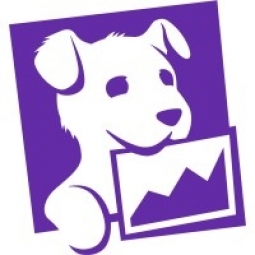Customer Company Size
Large Corporate
Region
- America
Country
- Argentina
Product
- Datadog Security Monitoring
Tech Stack
- Datadog
Implementation Scale
- Enterprise-wide Deployment
Impact Metrics
- Cost Savings
- Customer Satisfaction
Technology Category
- Analytics & Modeling - Real Time Analytics
Applicable Industries
- Food & Beverage
Applicable Functions
- Sales & Marketing
Use Cases
- Fraud Detection
Services
- Cybersecurity Services
About The Customer
Founded in 2009, PedidosYa is a member of the Delivery Hero group and the market leader for online food ordering in Latin America. With an innovative web and mobile app, PedidosYa gives users access to 12,000 restaurants across six countries in the region. The company faced a challenge when it introduced free food vouchers for new users. Users were creating several accounts from different IP addresses to receive multiple vouchers, which was difficult to pinpoint and prevent at scale.
The Challenge
PedidosYa, a member of the Delivery Hero group, faced a challenge when the company introduced free food vouchers for new users. Users were creating several accounts from different IP addresses to receive multiple vouchers, but this behavior was difficult to pinpoint and prevent at scale. The team’s threat detection workflow at the time involved manually creating firewall detection rules for every domain they operate, which was grueling, time-consuming, and required lots of maintenance. As fraudulent activity increased, it became impossible to create individual rules for every IP address that needed to be blocked. This process led to a month-long delay in detection, which gave the malicious actors enough time to achieve their goal.
The Solution
PedidosYa selected Datadog because it offers customizable, out-of-the-box threat detection rules that facilitate comprehensive security analysis of malicious patterns across the entire tech stack. These flexible detection rules identify a wide range of attacker techniques in real time and are mapped to the MITRE ATT&CK framework. Datadog’s extensive tagging system allows users to group security signals in logical ways, such as by service, region, or IP address. This ability to group and visualize security data streamlines the threat detection process for complex systems, such as the one at PedidosYa. Datadog Security Monitoring also comes equipped with expert-built, out-of-the-box dashboards that provide overviews of all security-related data.
Operational Impact
Quantitative Benefit

Case Study missing?
Start adding your own!
Register with your work email and create a new case study profile for your business.
Related Case Studies.

Case Study
The Kellogg Company
Kellogg keeps a close eye on its trade spend, analyzing large volumes of data and running complex simulations to predict which promotional activities will be the most effective. Kellogg needed to decrease the trade spend but its traditional relational database on premises could not keep up with the pace of demand.

Case Study
HEINEKEN Uses the Cloud to Reach 10.5 Million Consumers
For 2012 campaign, the Bond promotion, it planned to launch the campaign at the same time everywhere on the planet. That created unprecedented challenges for HEINEKEN—nowhere more so than in its technology operation. The primary digital content for the campaign was a 100-megabyte movie that had to play flawlessly for millions of viewers worldwide. After all, Bond never fails. No one was going to tolerate a technology failure that might bruise his brand.Previously, HEINEKEN had supported digital media at its outsourced datacenter. But that datacenter lacked the computing resources HEINEKEN needed, and building them—especially to support peak traffic that would total millions of simultaneous hits—would have been both time-consuming and expensive. Nor would it have provided the geographic reach that HEINEKEN needed to minimize latency worldwide.

Case Study
Energy Management System at Sugar Industry
The company wanted to use the information from the system to claim under the renewable energy certificate scheme. The benefit to the company under the renewable energy certificates is Rs 75 million a year. To enable the above, an end-to-end solution for load monitoring, consumption monitoring, online data monitoring, automatic meter data acquisition which can be exported to SAP and other applications is required.

Case Study
Coca Cola Swaziland Conco Case Study
Coco Cola Swaziland, South Africa would like to find a solution that would enable the following results: - Reduce energy consumption by 20% in one year. - Formulate a series of strategic initiatives that would enlist the commitment of corporate management and create employee awareness while helping meet departmental targets and investing in tools that assist with energy management. - Formulate a series of tactical initiatives that would optimize energy usage on the shop floor. These would include charging forklifts and running cold rooms only during off-peak periods, running the dust extractors only during working hours and basing lights and air-conditioning on someone’s presence. - Increase visibility into the factory and other processes. - Enable limited, non-intrusive control functions for certain processes.

Case Study
Temperature Monitoring for Restaurant Food Storage
When it came to implementing a solution, Mr. Nesbitt had an idea of what functionality that he wanted. Although not mandated by Health Canada, Mr. Nesbitt wanted to ensure quality control issues met the highest possible standards as part of his commitment to top-of-class food services. This wish list included an easy-to use temperature-monitoring system that could provide a visible display of the temperatures of all of his refrigerators and freezers, including historical information so that he could review the performance of his equipment. It also had to provide alert notification (but email alerts and SMS text message alerts) to alert key staff in the event that a cooling system was exceeding pre-set warning limits.

Case Study
Coca-Cola Refreshments, U.S.
Coca-Cola Refreshments owns and manages Coca-Cola branded refrigerators in retail establishments. Legacy systems were used to locate equipment information by logging onto multiple servers which took up to 8 hours to update information on 30-40 units. The company had no overall visibility into equipment status or maintenance history.







